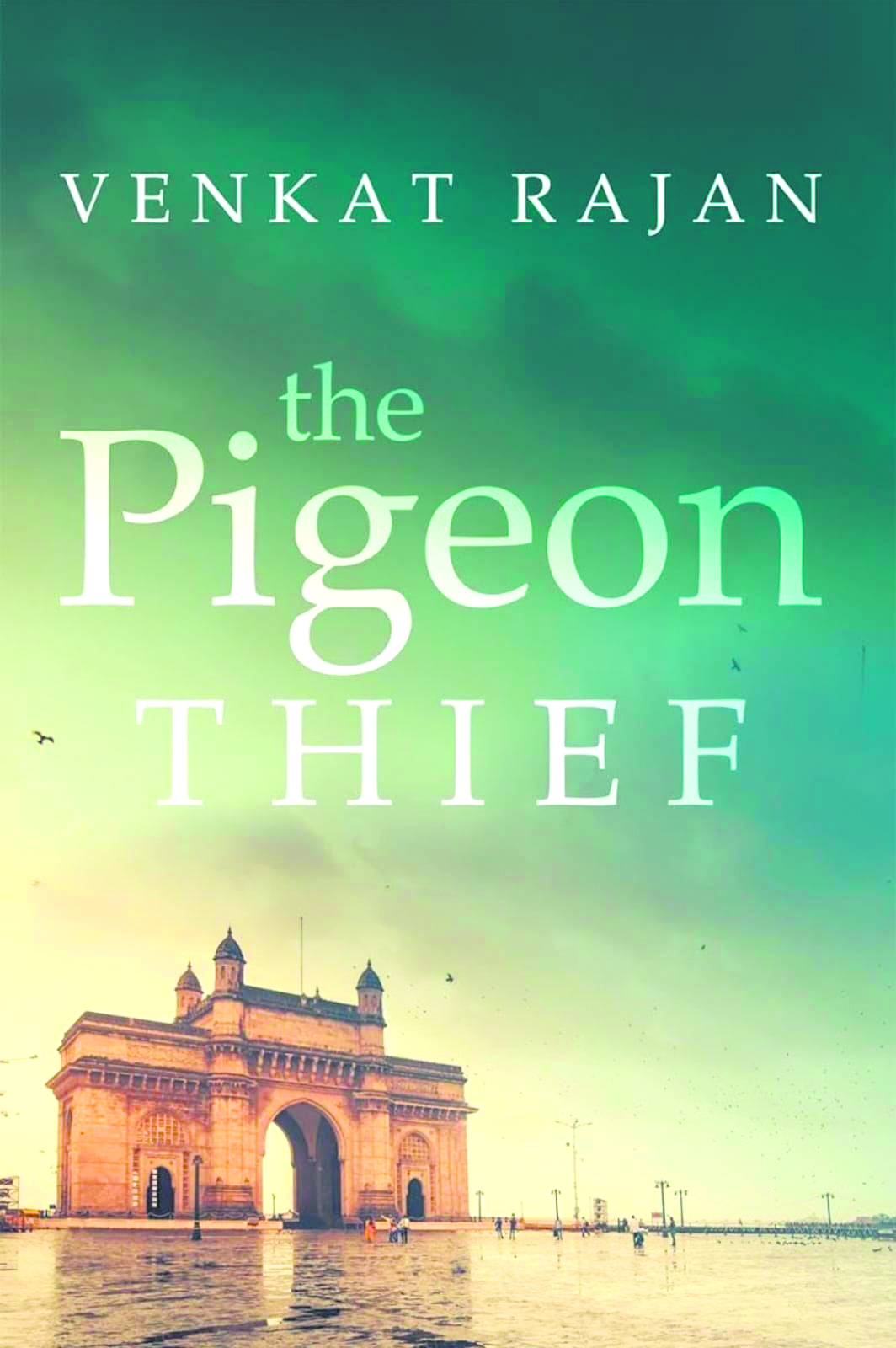
The Pigeon Thief› is a novel set in the late ‹90s in Bombay. It captures the bond between twenty-seven-year-old John Smith, an Australian backpacker on a soul-searching journey, and Raju, a 12-year-old street urchin from Bihar, who makes a living being a helper to an Airport Taxi Driver, Hamid Bhai. The boy is careful not to reveal his original identity in Bombay, as he fears his tormentor, Thakur – a counterfeit currency pedlar in the town of Gaya will get at him with the help of his Friday Man Gugu. He believes solving the Rubik›s Cube he found in Hamid›s taxi will symbolize overcoming his life›s problems. The cube accompanies him through his struggles in Bombay, providing partial solutions along the journey and keeping his hope alive.
Raju becomes John›s little guide in Bombay, and they embark on a journey together to explore the best-kept secrets of the maximum city. Joining the duo is Reshma, a charming young girl who works in a bookstore run by a seventy-year-old Parsi man.During one of their outings, Raju suddenly goes missing. Curious and concerned, John searches for Raju, armed with only a fragmentary and disconnected footprint in the mysterious world of street children and their haunts. The search for Raju becomes his true soul-searching journey, leading him to understand the lives of the vulnerable, the complex social structure, and the struggles migrants face in a big city like Bombay.
The story thematically aligns with the quote of Mother Teresa, which goes –
‹We sometimes think poverty is only being hungry, naked, and homeless. But being unwanted, unloved, and uncared for is the greatest poverty.›
Venkat Rajan, the author, believes that all street children are not delinquents but fight invisible forces daily! According to him, the extraordinary strength and silent narratives of the orphans and their everyday struggles with the system must be told and told loud enough. The novel ‘The Pigeon Thief’ does a superlative job at this. Raju’s struggles with the past, where he is accused of a crime, he has no inkling of, and his bonding with mid-day newspaper selling boy, Aamir, and their conversations reveal the trauma of the marginalized – their dealings with the police, their employers, the judicial system, and even with their own kind demand resilience of unquantifiable magnitude, which is beautifully prosed with excellent detailing by the author.
Venkat Rajan loves the art of silence in storytelling and incorporates nature and landscape to enrich the narrative. He believes readers shouldn›t just read about the gentle breeze; instead, they should feel its caress through the words they read. He brings a hint of a smile to readers› faces in one paragraph and takes them through deeper emotions in the next. He also believes that if a character experiences a shock, the reader should experience the shock at the very exact moment—any lapse would turn the reading into a ritual and the story into just a story, not a lived life.
«The Pigeon Thief» is a moving story that brilliantly conveys the essence of Mumbai in all its radiance and toughness. With its vivid setting, well-developed characters, and gripping plot, Venkat Rajan takes readers on a spiritual and personal exploration that will stay with them long after the last page is turned. For anybody who has ever ventured to dream of adventure in the city that never sleeps, «The Pigeon Thief» is a must-read. It is a monument to the continuing power of human connection despite the turmoil of metropolitan life.